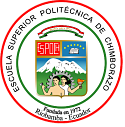The Human Capital of the Software Industry in San Francisco de Campeche
DOI:
https://doi.org/10.47187/perspectivas.7.1.242Keywords:
Human Capital, Software, Industry, ManagementAbstract
Human resource management is essential in the software industry, as human capital represents its main asset. This study aims to identify the key characteristics of human capital in this industry in San Francisco de Campeche, focusing on hiring criteria, labor structure, and educational composition. The methodology involves a digitalized instrument hosted on the Software Industry Observatory web portal, distributed among software development companies with a fiscal address in the city. The results presented in this publication focus on human capital indicators, revealing a combination of dependent employees, freelancers, apprentices, and temporary workers, indicating labor flexibility and commitment. Extensive academic education is predominant, highlighting the importance of training in the sector. Turnover rates vary across companies, reflecting different levels of job stability. Companies value soft skills such as responsibility, teamwork, and problem-solving.
References
Chiavenato,I.(2008) Gestión del Talento Humano. México: McGraw.Hill
Smith, Adam (1776), Investigación de la naturaleza y causas de la riqueza de las naciones, Alianza, Madrid.
Salgar, J., & Tello Escobar, M. A. (2018). Propuesta de un modelo para la asignación de recursos humanos a los proyectos a cargo de la oficina de gestión de proyectos (PMO) de coomeva a nivel corporativo. Recuperado de https://api.semanticscholar.org/CorpusID:165173300
Bernal González, I., Pedraza Melo, N. A., & Castillo Hernández, L. (2020). El capital humano y su relación con el desempeño organizacional. Revista ESPACIOS. ISSN, 798, 1015.
Mex Alvarez, D. C., Manzanilla Yeh, E. J., Hernández Cruz, L. M., Cab Chan, J. R. y Ortiz Cuevas, N. G. (2021). Propuesta de indicadores para evaluar la industria de software de una región. Revista Electrónica sobre Cuerpos Académicos y Grupos de Investigación, 8(16).
Salinas, E. (2022). El régimen de contratación y su relación con el nivel de desempeño. [Tesis Posgrado, Universidad César Vallejo], Lima, Perú. shorturl.at/esLRV.
Mariño, E. (2018). Beneficios laborales y los estados financieros en las empresas de transportes en el distrito de Santa Anita, año 2018. [Tesis grado, Universidad Cesar Vallejo], Lima, Perú. shorturl.at/ftKQ1.
Davis K., Newstron W. (2002). Comportamiento Humano en el trabajo. Editorial Mc Graw Hill. Undécima edición.
Alvarez Orozco, Dolores Guadalupe. (2020). ROTACIÓN DE PERSONAL ¿Qué es y cómo combatirla?.
García, A., Martínez, E., & Ramírez, J. (2017). Normas de calidad y su impacto en el desarrollo de software. Revista Internacional de Sistemas Informáticos, 10(2), 45-53.
Montes, S. B., Busquets, M., & Pascual, L. (2018). La gestión de los recursos humanos en los ayuntamientos de la provincia de Barcelona: análisis de los principales retos y oportunidades. In La gestión de los recursos humanos en los ayuntamientos de la provincia de Barcelona: análisis de los principales retos y oportunidades (pp. 1-14). Recuperado de: https://dialnet.unirioja.es/servlet/articulo?codigo=6748832
“Diseño de la base de datos para una aplicación web utilizando MongoDB”. José Ramón Cab Chan †*, Luz María Hernández Cruz, Diana Concepción Mex Álvarez y Jorge Eduardo Espadas. Pérez Revista Proyectos Institucionales y de Vinculación. Año IX, N° 18 Julio-diciembre 2021. ISSN:2395 – 9029. pp 69 – 76.
Martínez, P., Mendizábal, E. (2001). Influencia del clima laboral sobre la rotación de personal en una empresa de la iniciativa privada. 13 de febrero 2016. Recuperado de: http://132.248.9.195/pd2001/289467/Index.html
Published
How to Cite
Issue
Section
License
Copyright (c) 2025 Diana Concepción Mex Álvarez, Luz María Hernández Cruz, Margarita Castillo Téllez, Charlotte Monserrat Llanes Chiquini, Yaqueline Pech Huh, José Luis Lira Turriza

This work is licensed under a Creative Commons Attribution 4.0 International License.
Copyright
The authors of the manuscripts will retain their copyright on their articles published in Pespectivas Journal. These rights allow the authors to present their manuscripts in public, prepare derivative works, reproduce them physically by printing and distribute them on their social or research networks. These rights will remain unchanged as long as the authors respect the publication and free access policy of Perspectivas Journal.
Publication Rights
Perspectivas Journal reserves all first publication rights on each of the articles that the authors have sent to its review and publication process. It implies that authors will only exercise their copyright if they state the source and origin of the publication correctly, mainly when they distribute, share, present, or use their articles' total or partial content.














